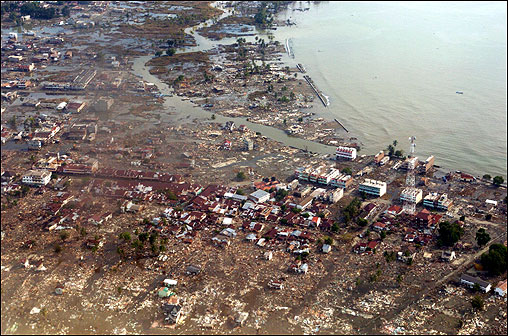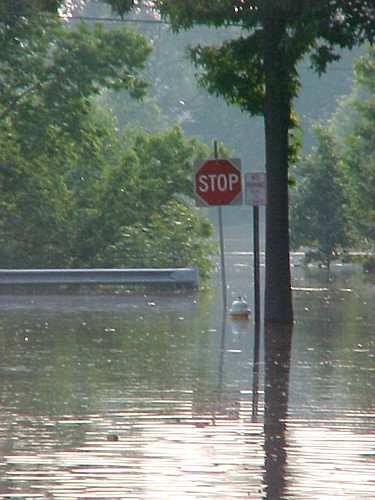After Tsunami Devastation, What Now?
 The recent tragedy brought about by an 8.9 magnitude earthquake in the northeast coast last Friday, March 12, 2011 did not only left scars on Japanese people but along with that, came a horrifying tsunami which claimed thousands of lives and properties and there are a lot more missing up to date.
The recent tragedy brought about by an 8.9 magnitude earthquake in the northeast coast last Friday, March 12, 2011 did not only left scars on Japanese people but along with that, came a horrifying tsunami which claimed thousands of lives and properties and there are a lot more missing up to date.The question now is whether this tsunami would affect water displacement in major seas and how it will affect our environment especially now that we are focused on getting efficient energy and finding alternative ways for sustainable development both in energy resources and our environment.
A tsunami is caused by the displacement of a large volume of a body of water, usually an ocean, though it can occur in large lakes. Tsunamis are a frequent occurrence in Japan
As stated, earthquakes, volcanic eruptions and other underwater explosions (including detonations of underwater nuclear devices) landslides and other mass movements, meteorite impacts and other disturbances above or below water all have the potential to generate a tsunami (source: Wikipedia).
These events are natural events that are beyond man’s control. This is also known as an “acts of God.” The impact on our end is unimaginable and sometimes horrifying. Properties, livelihoods, trees, and lives are lost in just a glimpse.
Precious coral reefs and mangrove areas would be crushed by the huge tsunami waves which will lead to an environmental and economic setback that could take years to reverse and restructure.
According to scientists, reef-forming coral grows only about 0.5 cm, or 1/5 inch a year, thus for the seaside resorts on the numerous affected islands to regain their previous splendour could take several years to a decade. The worst marine damage was likely to have been concentrated 100m to 1km from shore. Fortunately, large sea mammals such as whales and dolphins probably suffered little impact.
 According to
According to The earthquake that occurred on December 26, 2004 was an undersea earthquake originated in the Indian Ocean off the western coast Indonesia Alaska India plate under the section called the Burma Indian Ocean . They are most prevalent in the Pacific. The Indian Ocean tsunami caused waves as high as 50 feet (15 meters) in some places, according to news reports. The resulting tsunamis devastated the shores of Indonesia , Sri Lanka , India , Thailand and other countries even reaching the east coast of Africa some 2800 miles away of the epicentre.
Tsunami waves poisoned the fresh water supplies and the soil by salt water infiltration and deposition of a salt layer over land. It has been reported that in the Maldives
It also affects water supply which contaminated it mostly. Due to this, safe water is scarce leading to water-related diseases such as cholera, typhoid fever, diarrhea and sometimes malaria. According to World Health Organization (WHO) over 200,000 people died from 2004 Indian Ocean tsunami which led to a waterborne epidemics and outbreak.
The tsunami impacted water quality by flooding septic tanks and causing their contents to contaminate ground and surface water. Seawater also penetrated into groundwater tables, making the water unfit for human consumption. The tsunami also destroyed rural water supply systems across the region.
Following a disaster, there is enormous pressure on political leaders and public health officials to take disease control interventions mainly spread through contaminated water. The tsunami raised unique challenges for those involved in these efforts.
In most respects the profile of a tsunami resembles that of a flood caused by a hurricane or cyclone. Therefore, disaster response guides consider Tsunamis as floods although the hydrological and engineering issues associated with saline water infiltration are vastly different. Innovative solutions were often necessary to deal with the special circumstances presented by the aftermath of the Tsunami disaster.
With all these facts and evidences, now this is happening again in Japan
The damage result of this tragedy is so heartbreaking and that people now are scared and thinking of ways on how to prevent this from happening to their country. But as I said, it was all part of an “acts of God,” beyond our control, but what we need to do is to be ready when it happens, where it happens and how it happens. And just like any other failures we encounter in life, there is no other way but up and keep going. Rebuilding, restructuring and reinventing are the three major keys that the nation should do right after the disaster.







